Starflower Puzzles
Irina Kadis
Puzzle 1: A Remarkable Flower
Constellations of these star-shaped blooms are a familiar view for a nature observer in
Massachusetts in the second half of May. Found at forest margins, in pine woods,
and along those roadsides that are less disturbed, the modest and delicate wild
flower is aptly called starflower.
Come on, take a closer view. You will find a smooth vertical stem bearing a whorl of rather large,
thin leaves at the top. Hidden underneath this leaf whorl, there are a few more minute inconspicuous
alternate leaves. Ascending from the center of the whorl, there is a thread-like peduncle or sometimes
two or even three or four, each crowned with a star-like flower.
It is quite remarkable that most flowers have seven petals and also the number
of large leaves is often seven. Yet the Latin name of this plant is
Trientalis—apparently having something to do with tri,
the Latin for 3, and not 7! As many other plant names, the name Trientalis
was proposed by Carl Linnaeus himself. The Farther of organismic biology apparently
must have had something in mind when giving the "three" name to this wildflower.
H-m-m... Have anybody ever felt puzzled upon running into this Tri-entalis?
My laziness finally overcome by curiosity, I tried an easy shortcut to the answer.
Let's see if the good old botanical manual can help. I mean the classic M.L. Fernald's
edition of Gray's Manual of Botany, which is full of curious details about every
plant—including Fernald's own research and interpretations of Latin names for many plants.
In the preface Fernald spoke about his interest concerning plant name origins and even
provided examples of apt names, particularly those assigned by Linnaeus,
which provoke insights both into natural and human history.
There must be something in there about Trientalis... A-ha, here you go:
"A Latin name meaning the third part of a foot, alluding to the height of the plant."
Trientalis indeed means "equal to one-third of the Roman foot (4 inches)."
Yet in this case my favorite author left me room for doubt.
Is it really possible that the great Linnaeus when naming a plant would have
highlighted its non-descript height? Tens of thousands of plants are just about this tall...
No, according to what Fernald himself said in the preface to the Manual, there should be some other,
more meaningful explanation.
I stare at the star flower once again. There are seven petals; besides,
seven green sepals underneath the petals and even seven stamens!
Of course nothing is in threes or even times three—indeed if this were the case,
then Trientalis would be a monocot, perhaps from lily family... Fantasies.
I start meandering across the floodplain of Latin dictionaries.
Yes, trientalis can be interpreted the way Fernald was looking at it: triens
- (one-third) and -
alis (just a suffix of an adjective), but also trien
- (thrice) and -talis meaning "of such a sort" and
also "distinguished"! Eureka! Distinguished in three ways!
Yet what does it mean? Which three ways?
Is this another puzzle bequeathed to us by the great Linnaeus?
For those who have watched starflower this new puzzle is not as hard as the previous.
Starflower with its seven petals, seven sepals, and seven stamens is indeed thrice an
oddball in its own family—primrose family! If we look, for example, at a flower of whorled loosestrife
(Lysimachia quadrifolia), a more obedient member of the same family, we are going to find "stars"
of a different kind: five-petaled flowers, with five sepals and five stamens. Wow. Linnaeus could even
call starflower Quadrientalis, or 'remarkable in four ways'—in case he took the seven largest
leaves into this count, but as we know, Linnaeus built his system exclusively on the flower structure.
Puzzle 2: A Distinguished Northerner
Thanks to Carl Linnaeus, we enjoy a very handy way of naming organisms,
every Latin name consisting of two parts. The second part is the epithet.
This idea somewhat resembles the way we, humans, are distinguished by
the first and last name: while the family name is unique
(or at least is supposed to be unique), the first, given name may repeat itself
countless times for different people. In names of organisms,
these are epithets that tend to be repetitive.
There is George Bush and George Washington; there is Trientalis
borealis, but also Clintonia
borealis (bluebead lily) and Linnaea
borealis (twinflower).
What do these plants have in common and why did they all receive the same epithet?
The fact is their primary habitat is the northern
or boreal coniferous forest, also called taiga.
This inhospitable biome generally does not boast many herbaceous plants:
few can tolerate severe lack of light all year round underneath spruces or firs.
Among them is starflower—along with bluebeads and twinflower.
Stretching all across Eurasia and North America, taiga (or boreal forest)
currently occupies the vastest area on the planet, as compared to other biomes,
which makes those few herbaceous plants that occur in northern woods still more prominent!
At this point the reader might object: starflower is a common view in Massachusetts,
but there is hardly any boreal forest around here. How do you explain this?
Wherever I see a starflower, I look around and almost invariably
find another little plant—Canadian mayflower (Maianthemum canadense).
This is yet another ambassador of the boreal forest in our flora.
Why do these two stick together so often? Perhaps they are both
remnants of vegetation that dominated Massachusetts territory
thousands of years ago?
We know that with the retreat of the glacier upon the end of the
most recent glaciation, the newly open land first became a stretch of tundra.
Later on, with further softening of the climate, at some point trees entered the area.
These daring trees must have been shade-loving evergreen conifers known for their
ability to live and photosynthesize during harsh winters.
They moved in not without a company, bringing a group of herbaceous
satellites along with them. Still later, when the climate changed even
more and the age of spruce and fir came to an end here, the conifers moved on,
farther north and west, leaving some of their subordinaries behind.
A few of these lingering plants, such as starflower and Canadian mayflower,
are still rather common; others, like bluebead lily, goldthread (Coptis
trifolia), or bunchberry
(Cornus canadensis)
have become less common; yet others (like twinflower) are now rare.
A modest starflower... A remarkable starflower...
Is it capable of telling us even more tales?
It's time to go out, observe, and contemplate.
27 May 2013
© I. Kadis. Photography A. Zinovjev. CC BY-NC-ND 3.0 license
Printable version / pdf (29 May 2013)
salicicola.com
webmaster
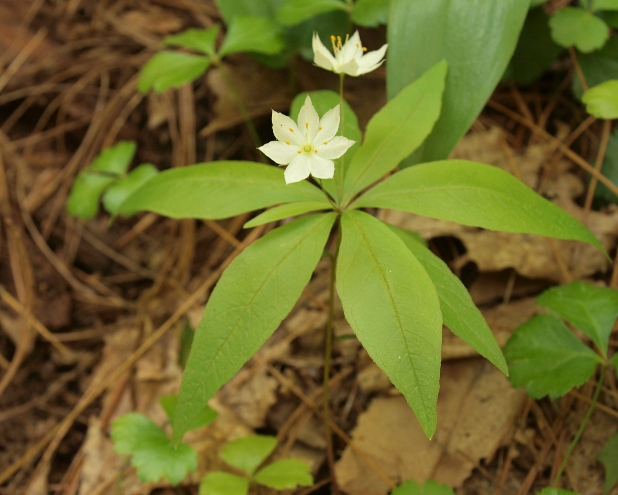
Trientalis borealis—starflower
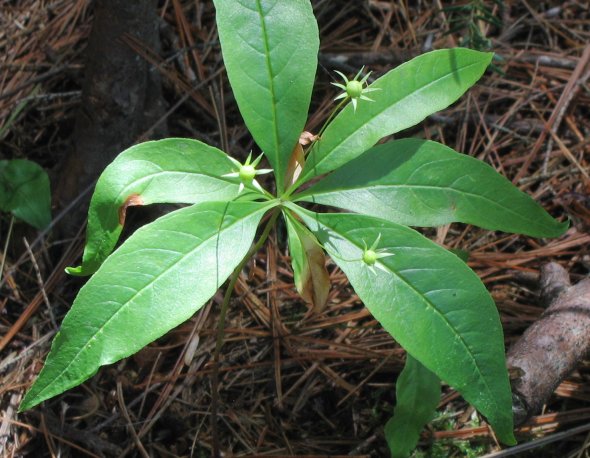
Trientalis borealis—starflower in fruit
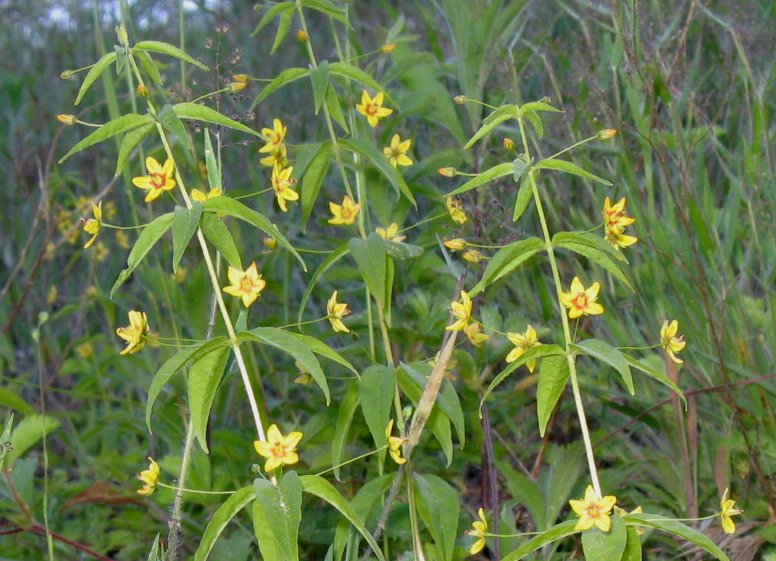
Lysimachia quadrifolia—whorled loosestrife
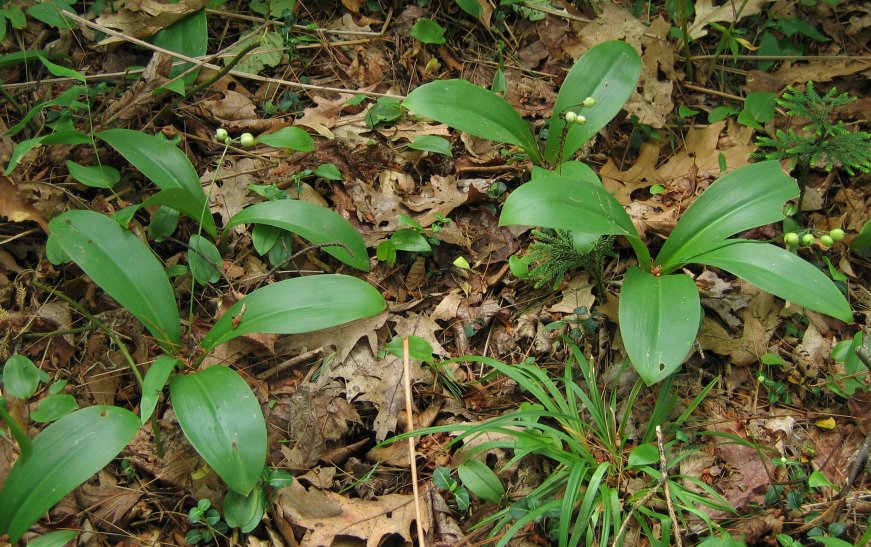
Clintonia borealis—bluebead
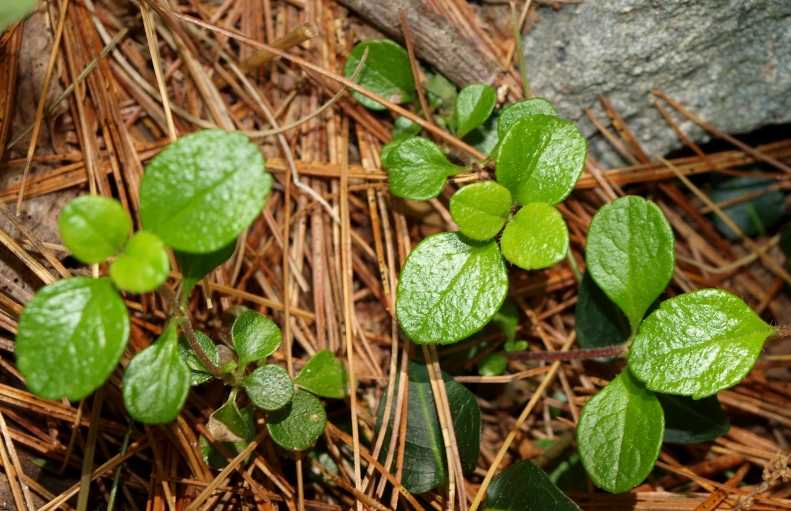
Linnaea borealis—twinflower
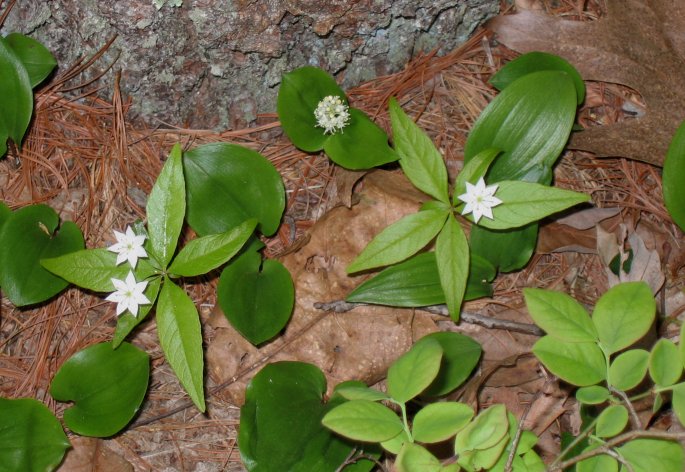
Starflower and Canadian mayflower
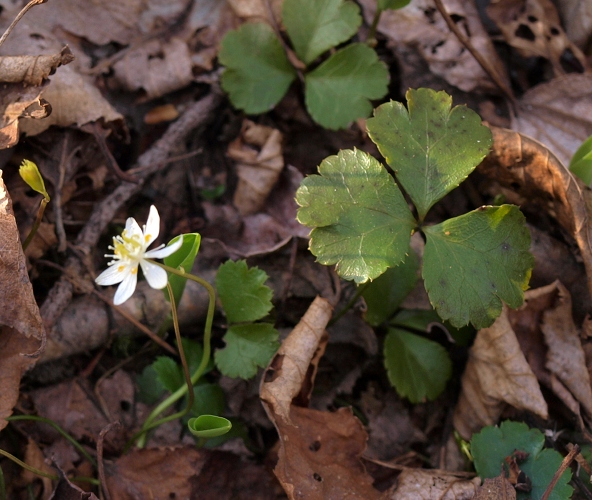
Coptis trifolia—goldthread
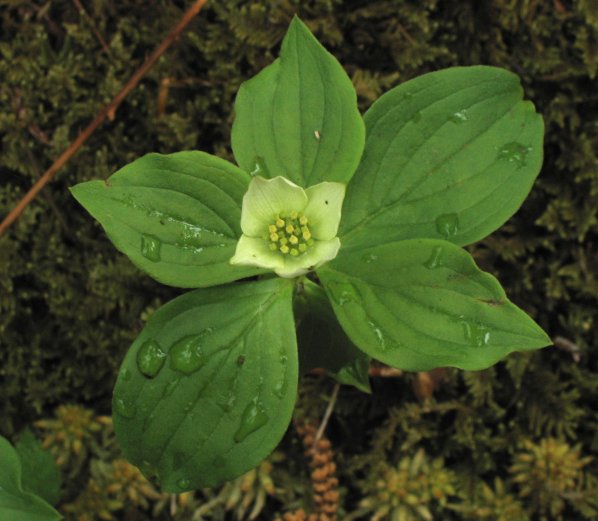
Cornus canadensis—bunchberry